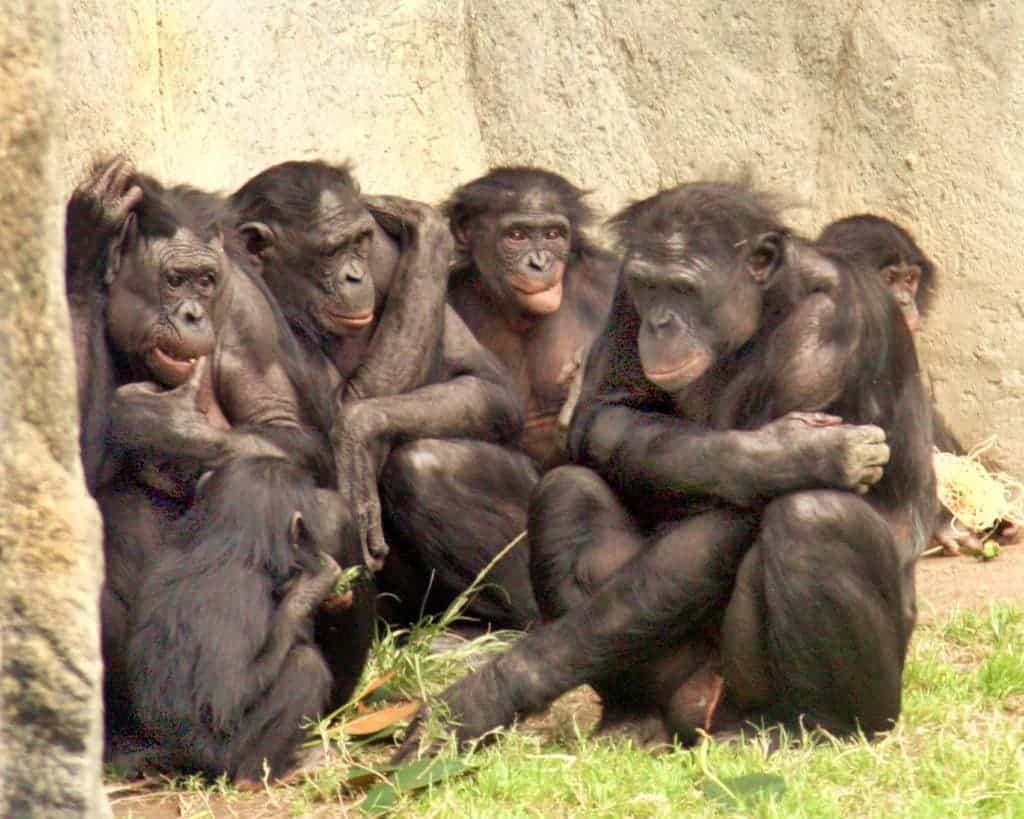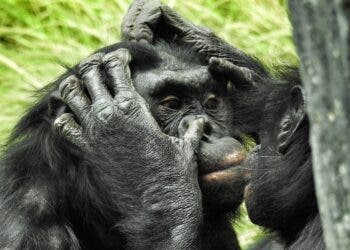As the saying goes, you can tell the character of a person by how he treats those who can do nothing to him. If someone’s mean to a waiter, that’s a big turn-off. No one likes a bully — no one except for bonobos, that is.
A new study reports that bonobos, who along with chimps are our closest relatives, don’t really care much for avoiding bullies.

Studies have shown that infants as young as six months can distinguish between good and bad guys. Brian Hare, an associate professor of evolutionary anthropology, and doctoral student Christopher Krupenye, both from Duke University, wanted to see if the same carries out for bonobos.
Study after study has shown how human-like bonobos can be, with a study just a few months ago reporting that they sometimes perform random acts of kindness — just like humans. They also tend to be less aggressive than humans, so researchers were expecting bonobos to prefer calmer, more peaceful individuals. However, this wasn’t really the case.
Researchers carried out two experiments. First, they showed the bonobos 24 bonobos animated videos of a Pac-Man-like shape struggling to climb a hill. Then, another similar silhouette appears. Sometimes, it would help the protagonist to the top, and other times it would kick him back down.

Next, they watched a live skit in which a human drops a stuffed animal, somewhere out of reach. A second person tries to give the toy back, but a third person steals it. The bonobos were then given the choice of receiving a piece of apple from the helper or from the thief.
In both scenarios, bonobos were able to distinguish the good guys from the jerks, but unlike humans, they tended to pick the jerks.
This was a bit surprising for scientists, who believe that the bonobos interpret rudeness as a sign of domination. Basically, they think that jerks behave this way because they can get away with it as they’re more powerful — and they choose powerful individuals as their allies. Teaming up with bullies could mean they have a lower chance of being bullied themselves.
Perhaps even more interestingly, this could indicate that the innate tendency of humans to shun bullies may be unique to our branch of the primate family tree. It may be exactly this that allowed us to form a society and develop in such large groups — something which other animals might not be capable of.
“In the animal kingdom, there are all kinds of acts of cooperation. But we don’t see things like building skyscrapers or the establishment of institutions,” says comparative psychologist Christopher Krupenye.
“Humans might have this unique preference for helpers that is really at the heart of why we’re so cooperative,” said Krupenye, now a postdoctoral fellow at the University of St Andrews in Scotland.
The study was published in the latest issue of Current Biology.






